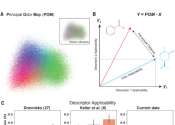A deep reinforcement learning model that allows AI agents to track odor plumes
For a long time, scientists and engineers have drawn inspiration from the amazing abilities of animals and have sought to reverse engineer or reproduce these in robots and artificial intelligence (AI) agents. One of these ...









